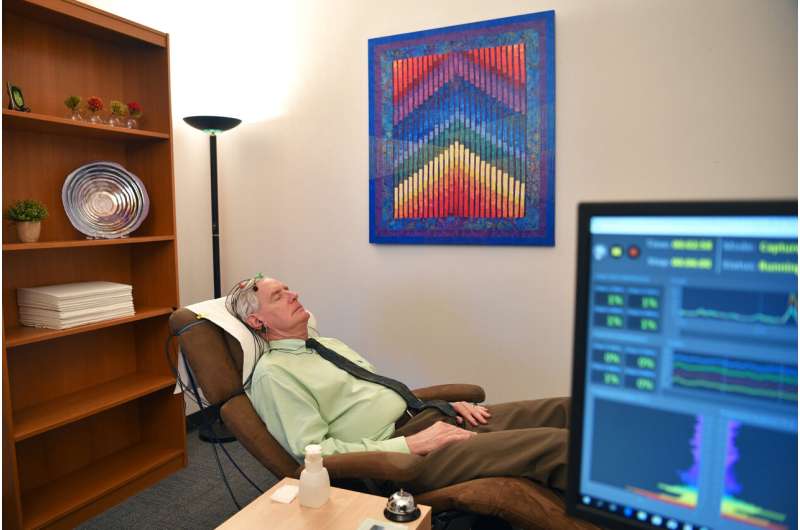This article has been reviewed according to Science X's editorial process and policies. Editors have highlighted the following attributes while ensuring the content's credibility:
fact-checked
proofread
Non-invasive neurotechnology shown to reduce symptoms of insomnia and improve autonomic nervous system function

A good night's sleep is crucial to health and well-being. Numerous research studies have shown that insomnia can increase the risk of cardiovascular events, obesity, diabetes and other illnesses. Now, a new study from researchers at Wake Forest University School of Medicine shows significant improvements in not only sleep quality, but also in improved autonomic nervous system function using a closed-loop, acoustic stimulation neurotechnology.
The study is published online in Global Advances in Integrative Medicine and Health.
Cereset Research with Standard Operating Procedures (CR-SOP) is the evolution of HIRREM, or high-resolution, relational, resonance-based electroencephalic mirroring, a noninvasive, closed-loop technology that uses scalp sensors to monitor brainwaves and software algorithms to translate specific frequencies into audible tones of varying pitch.
These tones linked to brainwaves are echoed back in real time via earbuds. This allows the brain a chance to listen to itself, to look at itself in an acoustic mirror.
"CR-SOP allows the brain to reset from stress patterns that contribute to insomnia," said Charles H. Tegeler, M.D., chair of neurology at Wake Forest University School of Medicine. "During the intervention, the brain continuously updates with respect to its own activity patterns, resulting in auto-calibration or self-optimization."
While still echoing brainwaves, as with legacy HIRREM, CR-SOP uses an updated platform with faster computers, new sensors and hardware, and computer management during the protocols. This results in faster echoing of brainwaves, shorter sessions and reduced dependence on technologist expertise.
In this randomized and controlled study of 22 adults, researchers compared changes on the Insomnia Severity Index (ISI), a self-report instrument to assess insomnia symptoms. About half of the participants received 10 sessions of CR-SOP linked to brainwaves while the control group received 10 sessions of randomly generated auditory tones. Sessions were received over a mean of 15.3 days. Researchers also recorded heart rate and blood pressure to assess autonomic cardiovascular regulation.
After completion of the sessions and at follow-up visits up to six weeks later, subjects in the CR-SOP group reported reduced insomnia symptoms. They also showed statistically and clinically significant improvements in autonomic function across multiple measures such as heart rate variability (HRV) and baroreflex sensitivity (BRS) compared to those who received random tones. HRV is a powerful biometric that reflects the health of the autonomic nervous system, and BRS measures blood pressure regulation. HRV is correlated with a host of important health and well-being outcomes.
These findings are in line with previous HIRREM research that showed a reduction in insomnia symptoms.
According to Tegeler, the study also used standard operating procedures so that all subjects received the same sequence of protocols. Taken together, this greatly increases the scalability of this approach so that more people might have access, more quickly, he said.
"Closed-loop acoustic stimulation can improve sleep as well as autonomic function in those who suffer from insomnia," Tegeler said. "This pilot study demonstrates these benefits with CR-SOP from sessions received over a short period. This is also an important step in showing the intervention's potential scalability for treating more people."
Ongoing clinical trials are focused on stress and anxiety in health care workers as well as caregivers.
More information: Catherine L. Tegeler et al, Cereset Research Standard Operating Procedures for Insomnia: A Randomized, Controlled Clinical Trial, Global Advances in Integrative Medicine and Health (2023). DOI: 10.1177/27536130221147475


















